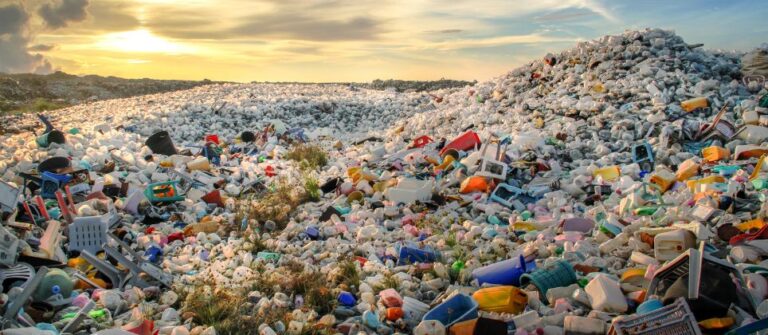IGEL Blog

Paradise Lost
The following is a guest post from Nathaniel Comer, founder of Sun Screen IT.
Visiting the Maldives archipelago fits most people’s idea of paradise. Within the huge network of 26 atolls are 1,192 islands – some inhabited, others not – home to luxury resorts with beachside bungalows, the whitest of soft sand, shaded by palm trees, and an ocean teaming with wildlife.
What might come as a shock is that lurking in this idyllic bliss is the island of Thilafushi. Close to the capital of Malé, it’s a municipal landfill – an artificial island of rubbish – where 330 tonnes of waste is delivered daily. Even in one of the most beautiful corners of the world, garbage is creating an environmental catastrophe.
This also goes for e-waste, too. Research shows it takes 190,000 litres of water to manufacture a single PC, with 85% of the carbon overhead generated during manufacture.
According to an Uptime Institute survey, only 28% of companies consider IT Asset Disposal [ITAD] a key part of their sustainability strategies. This means that most businesses don’t. The result is that they really have no idea how their equipment is actually dealt with and where components end up given there are so many third parties involved in the so-called ‘IT chain of custody’. This means numerous firms have been inadvertently illegally dumping their IT, especially if an approved and accredited ITAD provider is not used.
IT charity is broken
For years, the developed world has been using low-income developing nations as a dumping ground for IT under the guise of charitable donations. It is wholly wrong. Millions of tons of IT waste is generated each year and the ‘west’ has created toxic places on Earth because of this.
Indeed, some 998 million pupils globally still suffer from the digital divide. They just don’t have access to secure and usable IT equipment which would help them boost their earning potential and enable themselves to get out of poverty.
But here we fail, too. Some institutions in West Africa report having hundreds of PCs at their schools. The problem is that none of them work, such that they are then used as room dividers and even tables. The question of whether the computer technology actually works isn’t typically asked when a container is loaded and shipped.
Add to this the problem of data security. Again, this hasn’t really been addressed properly when it comes to giving away, retiring or recycling equipment. Morgan Stanley Smith Barney was recently fined $35m by the SEC for failing to wipe customer data off around 4,900 servers and hard drives as equipment was replaced
It’s not all doom and gloom – environmental pain is driving innovation
Whilst there is a huge amount of green washing as firms strive to meet ESG goals, there’s great behaviour, too. Businesses are being inspired and audited by organisations such as Science Based Target Initiatives, EcoVadis and Morningstar Sustainalytics who are doing a brilliant job at helping companies transition. EcoVadis and Sustainalytics are two ratings companies giving large enterprises bronze, silver, gold awards for their true and proven ESG activities and outcomes.
In addition, if we mine at the same current rates, it’s estimated that gold and silver will run out in circa 15 years and platinum and copper in around 30 years – key components used in the manufacture of electronic devices. However, the good news is that there is already enough out of the ground sitting dormant in electronic waste to keep us going if we moved to a circular economy and recycled it.
Businesses should be disposing of IT assets to end e-waste
So, what are the practical steps companies should take to reduce e-waste?
- Ensure that the ITAD selected has the right up-to-date certifications. They should be ADISA certified to standard 8.0 – it’s incredibly strict – along with and ISO 14001 and ISO 27001.
- Avoid obvious ‘red flags’. Any firm claiming to collect and recycle IT for free is either going bust or not meeting the above standards.
- View IT as a product not waste. Many organisations don’t. If it is seen as product, it can be collected, ethically refurbished and recycled, and put back into the circular economy. In fact, it can be monetized to generate (some) revenue for the company, too.
- Large companies must have a sensible global outlook given pervasive international standards aren’t there yet and there is huge dissonance in local laws. For example, there is limited point in a US firm selecting the lowest cost provider for off-shore ITAD– and feeling happy they have done enough – if the local firm then doesn’t recycle to US or EU/UK standards. That gratuitously and immorally passes the environmental buck elsewhere. Close attention to detail must be paid to the whole IT recycling chain.
- Recognise that whilst businesses have a responsibility to properly consume and dispose of corporate owned IT, so do individuals. Most people have an old laptop and various phones sitting in draws and cupboards at home. We run a program called the ‘Urban Mine’ where employees of client firms can bring in their old devices and have the data securely wiped and the unit properly disposed of and recycled by the corporate ITAD. We estimate that there’s about $65 million worth of recyclable metal salvageable from initiatives like this.
- Consider working with an ethical IT asset disposal provider for all electronic and IT waste disposal management. Sun Screen IT’s ITAD partner is Centerprise International. When they process end of life IT equipment from Sun Screen’s clients, they generously donate their margin to Sun Screen IT’s charitable foundation so that 100% of Sun Screen IT’s profits are used to help close the digital divide. Clients can also use one contract to manage all their IT recycling globally, safe in the knowledge that it meets the right standards.
By working effectively like this, companies can cut waste, honestly achieve their ESG agendas and take significant steps to the paradise of a greener future where IT isn’t a major polluter.


